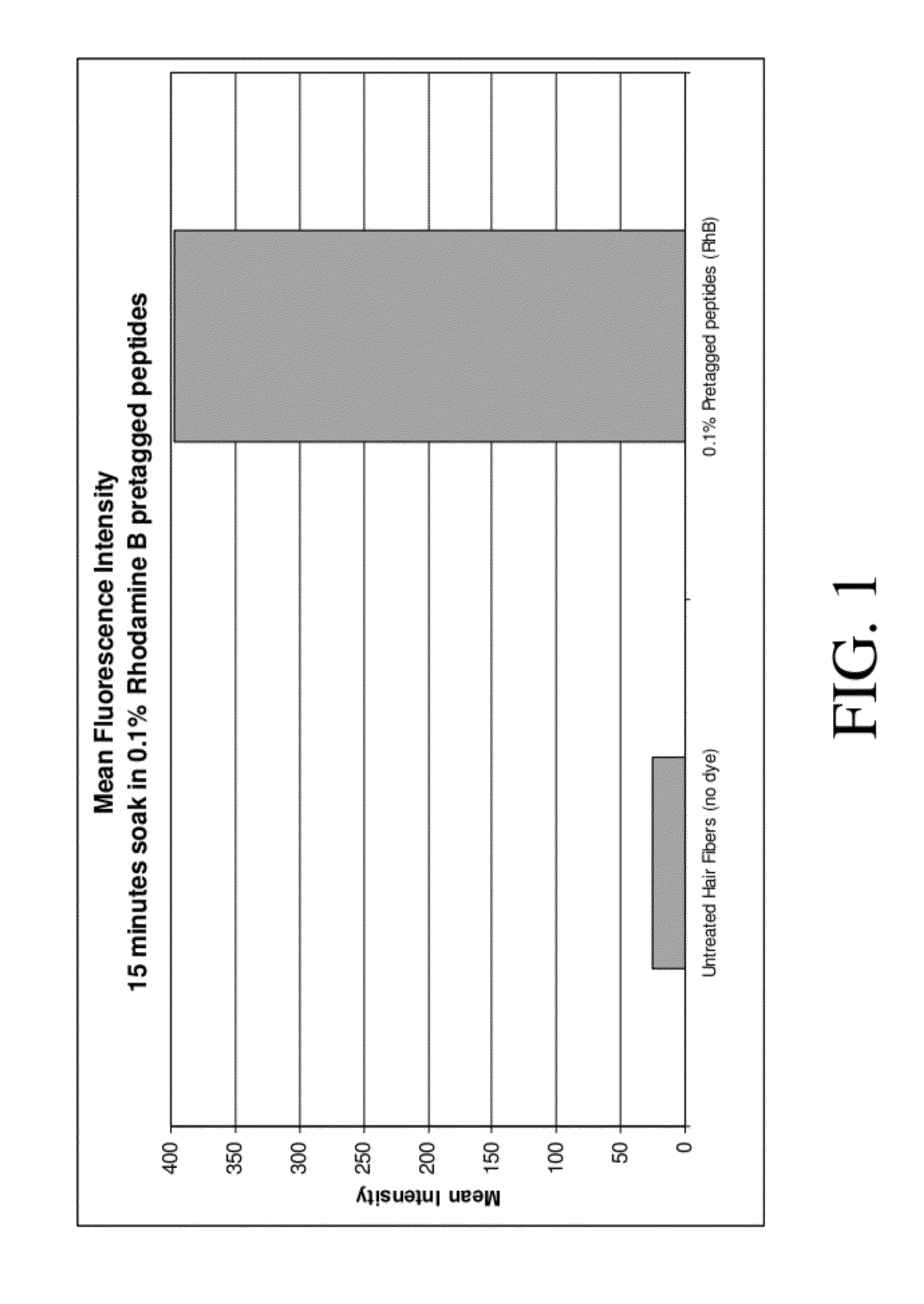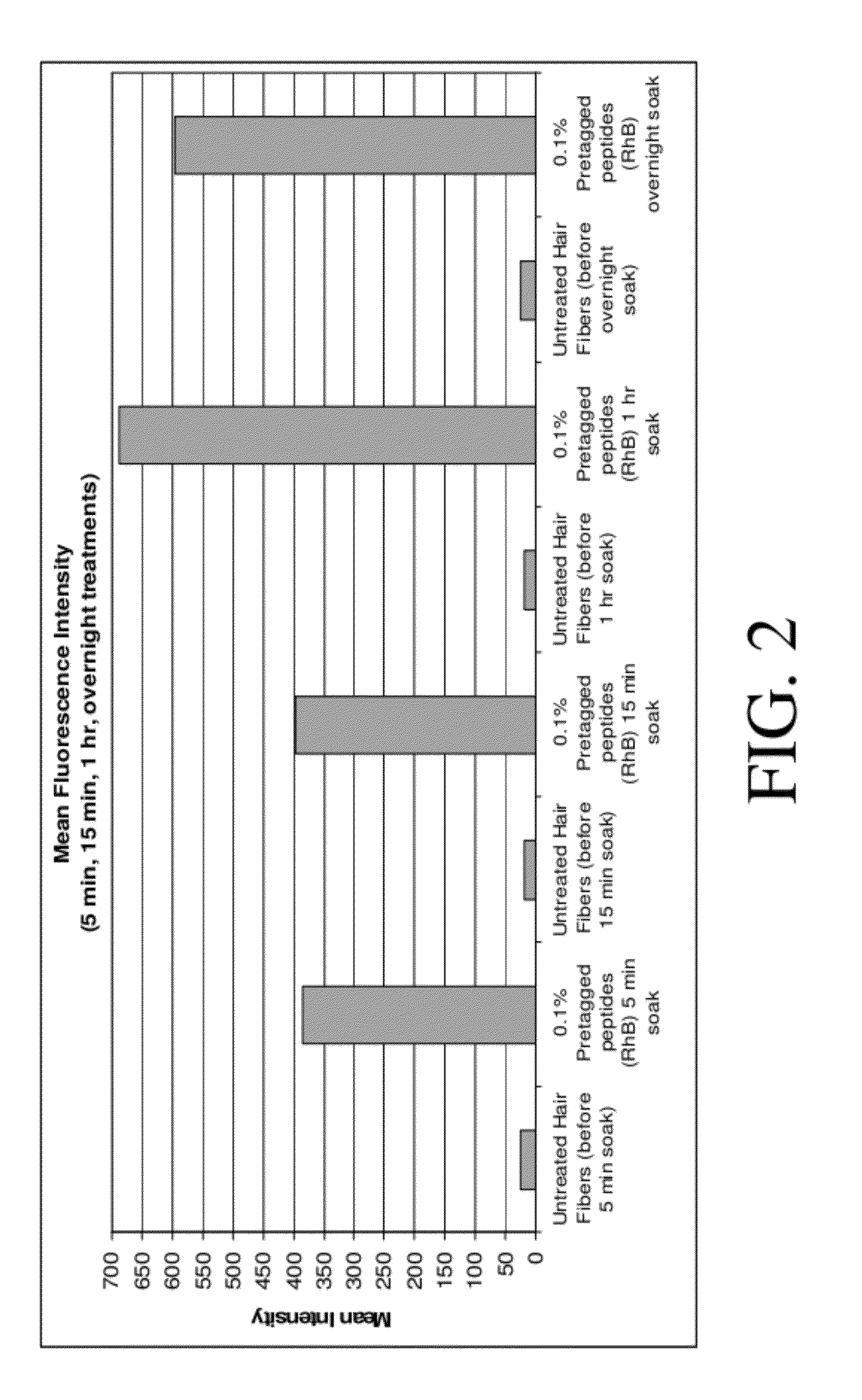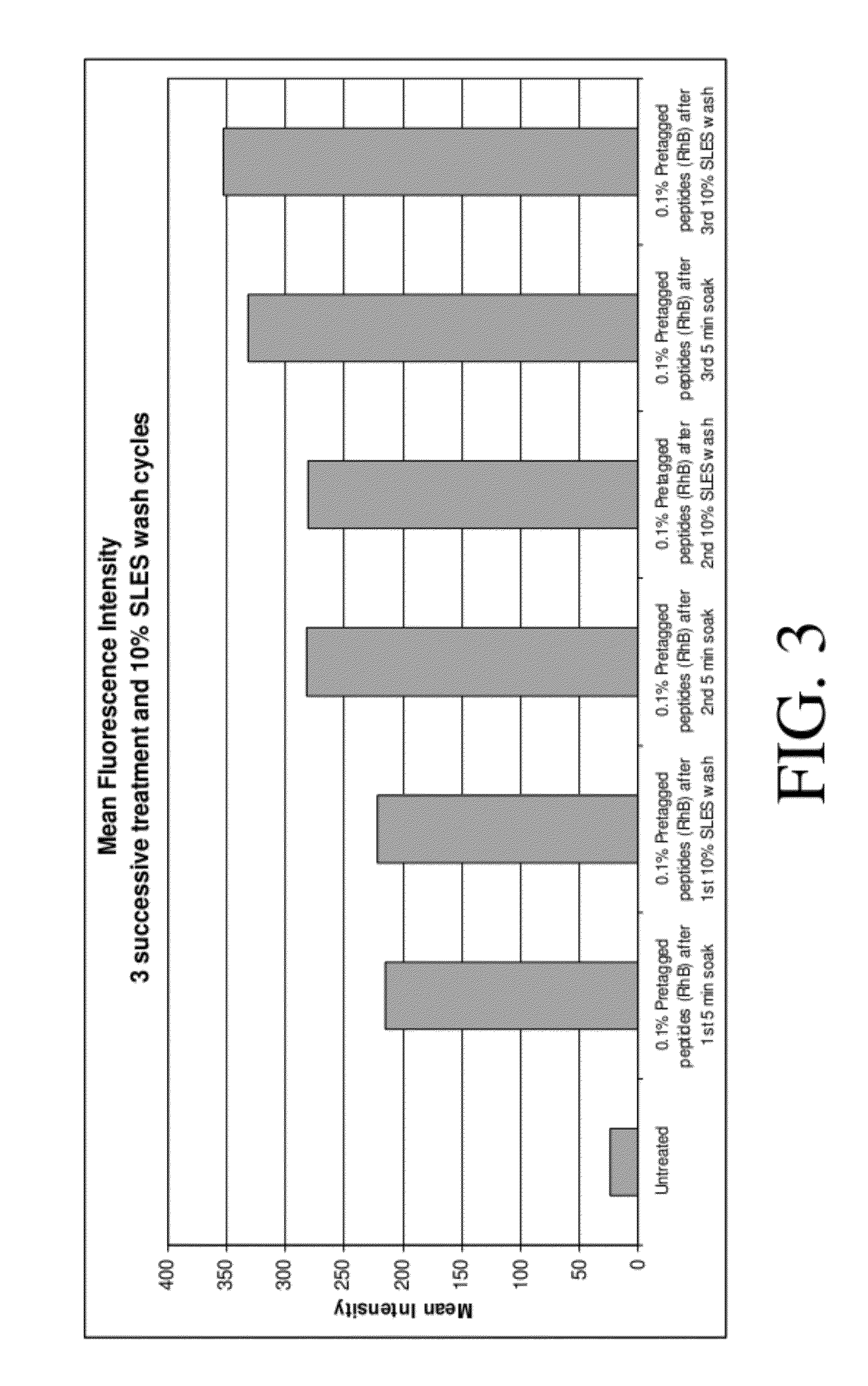Hair treatment composition with naturally - derived peptide identical to human hair
a technology of keratin fibers and hair treatment compositions, which is applied in the direction of peptides, peptide/protein ingredients, hair cosmetics, etc., can solve the problems of reducing the hydrolyzed hair effect and limited use of human and animal products, and achieves high hydrophilicity, increase rigidity and strength of hair, and help with the moisture retention of hair
- Summary
- Abstract
- Description
- Claims
- Application Information
AI Technical Summary
Benefits of technology
Problems solved by technology
Method used
Image
Examples
experiment ii
t Penetration of Peptides to Hair.
[0048]1. The four groups of 3 hair fibers were viewed under the microscope to take the initial readings (Untreated hair) and removed from the slides.[0049]2. Each set of fibers was soaked in peptide solution (peptide was pre-tagged with
[0050]Rhodamine B) for 5 minutes, 15 minutes, 1 hour and overnight.[0051]3. After soaking, each group was rinsed with deionized (DI) water for 30 seconds and dried.[0052]4. The hair fibers were reattached to a glass microscope slide and the ends were secured with adhesive tape.[0053]5. Readings for mean fluorescence intensity were taken using the Nikon microscope and NIS Elements software.
[0054]FIG. 2 shows the mean fluorescence intensity of untreated hair before 5 minute, 15 minute, 1 hour and overnight soak, and the mean fluorescence intensity of hair fibers treated with the peptide solution (peptide pre-tagged with Rhodamine B) with 5 minute, 15 minute, 1 hour and overnight treatments.
[0055]Conclusions: There is a ...
experiment iii
ect:
[0057]1. Untreated readings for mean fluorescence intensity were taken across the hair fibers using the Nikon microscope and NIS Elements software.[0058]2. The hair fibers were detached from the slide and soaked in 0.1% (total active) Rhodamine B pretagged peptide solution for 5 minutes (in a 50 ml beaker with enough solution to cover the fibers) and rinsed in DI water for 30 seconds and dried.[0059]3. The NIS Elements software was used to compute mean fluorescence intensity by taking 6 mean fluorescence intensity readings across each hair fiber (for a total of 18 readings per group) and averaged.[0060]4. Fibers were then washed with 2 drops of 10% sodium lauryl ether sulfate (SLES) (while still on the slide, ends unsecured from the scotch tape), gently lathered for 60 seconds, rinsed for 30 seconds with DI water, and dried.[0061]5. Mean fluorescence intensity readings were taken again.[0062]6. Subsequent soaks, rinses and readings were conducted by repeating steps 2-5 two more ...
PUM
| Property | Measurement | Unit |
|---|---|---|
| Color | aaaaa | aaaaa |
| Molecular weight | aaaaa | aaaaa |
Abstract
Description
Claims
Application Information
 Login to View More
Login to View More - R&D
- Intellectual Property
- Life Sciences
- Materials
- Tech Scout
- Unparalleled Data Quality
- Higher Quality Content
- 60% Fewer Hallucinations
Browse by: Latest US Patents, China's latest patents, Technical Efficacy Thesaurus, Application Domain, Technology Topic, Popular Technical Reports.
© 2025 PatSnap. All rights reserved.Legal|Privacy policy|Modern Slavery Act Transparency Statement|Sitemap|About US| Contact US: help@patsnap.com



